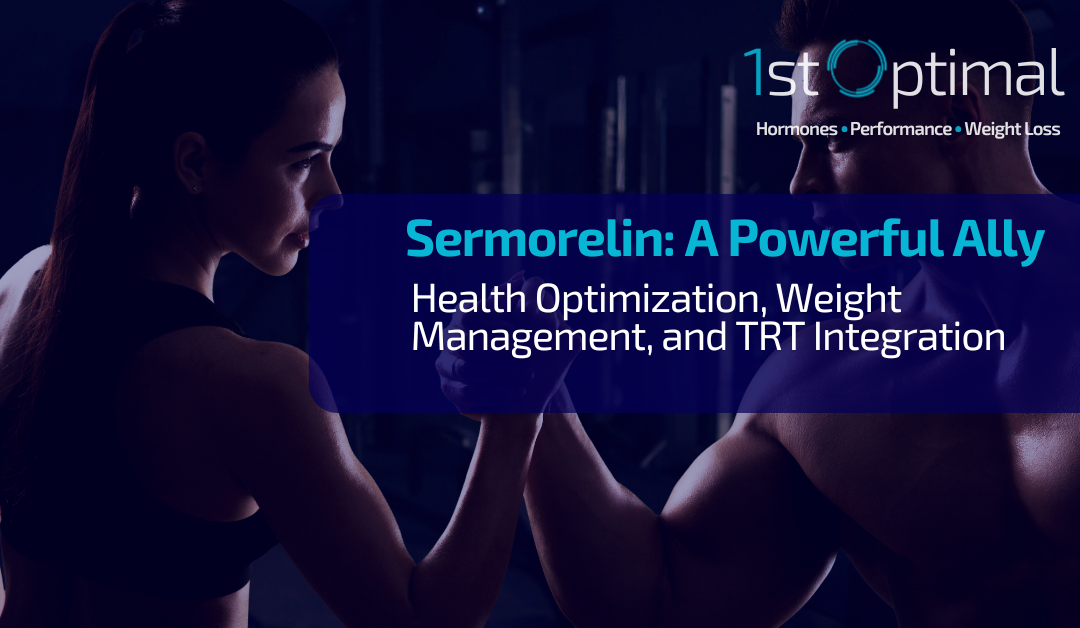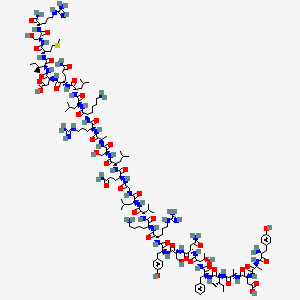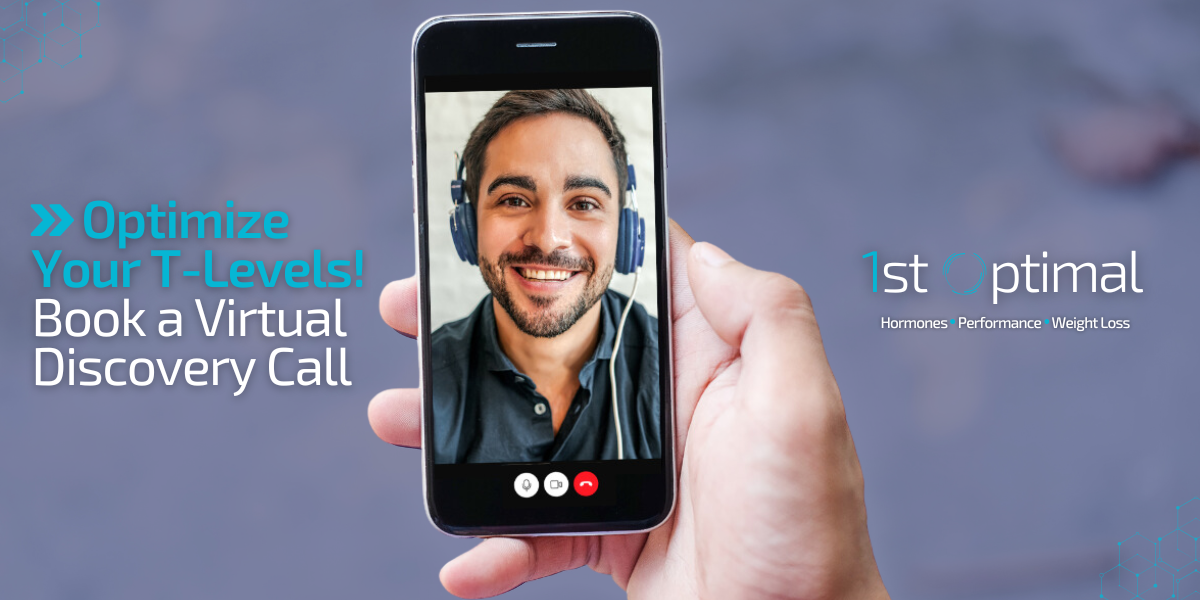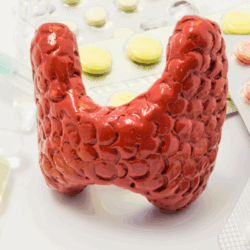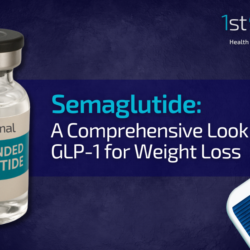Making a decision about your health is like making a critical investment in your future—it requires clear data and a solid strategy. When you’re exploring ways to enhance your energy, sharpen your focus, and improve your body composition, you’ll encounter powerful options like Sermorelin and TRT. Choosing between them isn’t about picking the “best” one, but the one that’s best for you. This is where the sermorelin vs trt analysis becomes essential. We will lay out the facts: how they work, the timeline for results, potential side effects, and long-term considerations. Our goal is to give you the information you need to build a personalized, effective health strategy that supports your performance for years to come.
Sermorelin: Is It Right for Health, Weight Loss, and TRT?
Why We’re Talking About Sermorelin
As we age, our body’s natural production of growth hormone (GH) begins to decline, leading to noticeable changes in energy, metabolism, and overall vitality. Sermorelin, a growth hormone-releasing peptide (GHRP), has emerged as a safe and effective way to stimulate the body’s natural GH production. This innovative therapy holds transformative potential for enhancing health, fitness, and anti-aging efforts. In this article, we’ll explore the benefits, safety, and integration of sermorelin with GLP-1 weight loss medications and testosterone replacement therapy (TRT).
What Is Sermorelin and How Does It Work?
Sermorelin is a bioidentical peptide designed to encourage the pituitary gland to release growth hormone naturally. Unlike synthetic GH injections, sermorelin promotes the body’s intrinsic hormonal balance, reducing the risks of over-supplementation. By enhancing natural GH levels, sermorelin supports a wide range of physiological functions, including metabolism, tissue repair, and cellular regeneration.
A Growth Hormone-Releasing Hormone (GHRH) Analog
Addressing Age-Related Decline
Sermorelin is a growth hormone-releasing hormone (GHRH) analog. In simple terms, it’s a bioidentical peptide designed to mimic the action of the hormone that naturally signals your pituitary gland to produce growth hormone (GH). As our GH production slows with age, many of us experience fatigue, stubborn weight gain, and a loss of vitality. Sermorelin works by gently prompting your pituitary gland to release more of its own GH, helping to counteract this decline at its source. This supports metabolism, tissue repair, and cellular regeneration.
What makes Sermorelin a compelling option is its safety profile. Unlike direct HGH injections that can override the body’s processes, Sermorelin works with your system’s own feedback mechanisms. This built-in regulation helps prevent the overproduction of GH, making it a safer approach for long-term health. Encouraging this natural hormonal balance is why a personalized strategy is so important. At 1st Optimal, we start with comprehensive lab testing to get a clear picture of your unique hormonal landscape, ensuring any therapy is precisely tailored to what your body needs to perform at its best.
What Are the Benefits of Sermorelin Therapy?
Sermorelin offers a variety of health and performance benefits that make it a valuable tool for individuals seeking to optimize their wellness and fitness:
- Enhanced Fat Metabolism: Sermorelin supports lipolysis, helping reduce body fat while preserving lean muscle mass.
- Improved Lean Tissue Growth and Recovery: It aids in muscle tissue repair, making it beneficial for fitness enthusiasts and athletes.
- Boosted Energy and Vitality: Many users report increased stamina, better sleep quality, and overall improved well-being.
- Healthier Skin, Hair, and Nails: By stimulating collagen production, sermorelin improves skin elasticity and reduces signs of aging.
- Cognitive and Emotional Benefits: Enhanced GH levels contribute to sharper focus, better memory, and an improved sense of emotional balance.
- Anti-Aging Support: Sermorelin slows the natural decline of GH, supporting longevity and a youthful appearance.
Beyond Muscle and Energy
While improved muscle recovery and higher energy levels are major draws, the benefits of sermorelin go much deeper. By supporting your body’s natural growth hormone release, this therapy can also sharpen cognitive function. Many users report better mood, memory, and mental clarity—a significant advantage for maintaining peak performance in a demanding career. Sermorelin also works to stimulate collagen production, which helps improve the health of your skin, hair, and nails, addressing visible signs of aging from a foundational, cellular level. This comprehensive effect on physical and mental well-being makes sermorelin a powerful tool in a proactive health strategy, helping you build resilience and feel more vital across every area of your life.
Is Sermorelin Both Safe and Effective?
Sermorelin is recognized for its safety and efficacy in medical research. Unlike direct GH therapies, which can lead to undesirable side effects, sermorelin works within the body’s natural feedback loop, minimizing risks of overdose or hormonal imbalances. Most side effects, such as mild injection site irritation, are temporary and manageable. Clinical studies confirm its long-term safety when administered under medical supervision (Walker et al., 2019, Michaels et al., 2020).
Understanding the Side Effects
When considering any new therapy, safety is naturally a top concern. Sermorelin is highly regarded because it works with your body’s own systems, not against them. Unlike direct growth hormone injections, which can override your natural hormonal regulation, Sermorelin gently prompts your pituitary gland to produce more GH on its own. This approach honors your body’s built-in feedback loops, significantly reducing the risk of hormonal imbalances. Most reported side effects are minor and temporary, like redness or discomfort at the injection site. These are easily managed, and clinical research confirms the therapy’s strong safety profile when administered under proper medical supervision.
Regulatory Status and Research Context
Sermorelin is a bioidentical peptide, which means it’s structurally identical to the hormone your body uses to trigger GH release. It’s not a synthetic hormone that replaces your body’s natural output; instead, it encourages your system to function more optimally, helping restore a more youthful pattern of hormone production. This method is designed to support your body’s intrinsic hormonal balance without introducing a foreign substance. By enhancing your natural GH levels this way, Sermorelin effectively supports critical functions like metabolism, tissue repair, and cellular health within a well-researched and established framework.
How to Use Sermorelin: Dosage and Guidelines
Sermorelin is typically administered through subcutaneous injections, often before bedtime to align with the body’s natural GH release cycle. Dosing varies based on individual needs, but a common starting point is 0.2–0.5 mg per day (Michaels et al., 2020). Therapy duration is typically three to six months, though some patients may require longer courses for optimal results. Regular monitoring ensures that therapy is effective and safe.
Administration Methods
Sermorelin is administered through a simple subcutaneous injection, which means it’s delivered just under the skin with a very fine needle. The process is straightforward and convenient enough for at-home use. To maximize its effectiveness, injections are typically taken before bedtime to align with your body’s natural growth hormone release, which peaks during sleep. Because every person’s body is different, your treatment plan is completely personalized. A medical provider will determine the right dosage and schedule for you based on comprehensive lab results and your specific health goals. This approach ensures you follow a safe, effective, and medically guided protocol tailored to your unique needs, with ongoing monitoring to adjust your therapy as you progress.
Can You Pair Sermorelin with GLP-1 Weight Loss Drugs?GLP-1 Weight Loss Medications
GLP-1 medications, such as Semaglutide or Tirzepatide, have gained popularity for their role in promoting sustainable weight loss care. Sermorelin complements GLP-1 therapy by mitigating muscle loss, a common concern during significant weight loss. By enhancing metabolism and preserving lean body mass, Sermorelin ensures that weight loss efforts result in healthier, more balanced outcomes. Additionally, Sermorelin’s support for energy levels can counteract the fatigue that some individuals experience with GLP-1 medications (Taylor et al., 2021).
Sermorelin vs. TRT: Which Treatment Is a Better Fit?Testosterone Replacement Therapy (TRT)
For men undergoing testosterone replacement therapy, Sermorelin offers synergistic benefits. TRT addresses low testosterone levels, improving libido, mood, and muscle strength. Sermorelin enhances these benefits by promoting better recovery, increasing IGF-1 levels (a marker of GH activity), and supporting fat reduction. Together, these therapies create a comprehensive approach to hormonal optimization, helping individuals achieve peak performance and vitality (Johnson & Patel, 2022).
First, What is Testosterone Replacement Therapy (TRT)?
When we talk about hormone optimization for men, Testosterone Replacement Therapy (TRT) is often a central part of the conversation. So, what exactly is it? At its core, TRT is a medical treatment designed to address low testosterone levels, a condition often called “Low T.” The therapy involves supplementing your body with testosterone to bring your levels back into an optimal range. This isn’t about creating unnaturally high levels, but rather restoring what’s been lost due to age or other health factors. By giving your body this external supply, TRT aims to alleviate the symptoms associated with low testosterone, such as fatigue, low libido, and difficulty maintaining muscle mass.
How TRT Works
The mechanism behind TRT is straightforward: it directly adds testosterone to your system. Unlike therapies such as Sermorelin that encourage your body to produce more of its own hormones, TRT provides a direct replacement. This direct action is why many men notice changes relatively quickly after starting treatment. Think of it as refilling a tank that’s running low. The goal is to maintain a steady, healthy level of testosterone, which in turn helps regulate energy, mood, and physical function. This direct approach is effective, but it also means your body may become dependent on the external source over time.
TRT Administration Methods
TRT isn’t a one-size-fits-all treatment, and how it’s administered can vary based on your lifestyle and medical needs. The most common methods include injections, which are typically given every one to two weeks. There are also topical gels or patches that you apply to your skin daily, allowing for a steady absorption of the hormone. Another option is pellets, which are small implants placed under the skin that release testosterone slowly over several months. Each method has its own pros and cons, and the right choice is always determined with a doctor to ensure it fits your personal health plan.
The Core Difference: Stimulation vs. Replacement
Understanding the fundamental difference between Sermorelin and TRT is key to deciding which path might be right for you. Sermorelin works by *stimulating* your pituitary gland, encouraging it to produce and release more of your body’s own growth hormone. It’s a gentle nudge to your natural systems. TRT, on the other hand, is a *replacement* therapy. It directly supplies your body with testosterone, bypassing your body’s own production signals. This direct approach often leads to faster results, while Sermorelin’s effects are typically more gradual as it works in harmony with your body’s natural hormonal rhythm.
Comparing Side Effects and Long-Term Considerations
When considering any hormone therapy, it’s crucial to weigh the benefits against the potential side effects and long-term implications. While TRT can be life-changing for many, it’s a significant medical intervention that requires careful management. Because it involves adding an external hormone, your body may react in ways that need to be monitored. The primary long-term consideration is that your body can become reliant on the therapy, as its natural testosterone production may decrease or even stop. This is why ongoing medical supervision is not just recommended—it’s essential for safe and effective treatment.
Potential Risks of TRT
While effective, TRT does come with potential risks that need to be managed. Some men may experience side effects like fluid retention, acne, or mood swings. More serious considerations include the potential worsening of conditions like sleep apnea or certain prostate issues. A significant long-term risk is that the body may reduce its own testosterone production, creating a dependency on the therapy. This is why a comprehensive approach, including initial and ongoing lab work, is so important. With proper medical guidance, these risks can be carefully monitored and managed to ensure your treatment is both safe and beneficial.
Impact on Fertility
A common question for men considering TRT is how it will affect their fertility. It’s a valid concern, as introducing external testosterone can signal the body to slow down or stop its own production, which can also reduce sperm production. However, it’s important to know that TRT does not automatically cause permanent infertility. For many men, fertility can be preserved or restored with careful medical management, sometimes by incorporating other medications that help maintain the body’s natural signals for sperm production. If starting a family is in your future, this is a critical conversation to have with your doctor before beginning therapy.
Timeline for Seeing Results
One of the appealing aspects of TRT for many is the timeline for results. Because it directly increases testosterone levels, its effects are often felt more quickly than with therapies that stimulate natural production. Many men report starting to feel better—with more energy and an improved mood—within four to six weeks of starting treatment. However, the full physical benefits, such as increased muscle mass and reduced body fat, can take longer to become apparent, typically around three to six months. It’s a process, and consistency under medical supervision is key to achieving the best possible outcome.
Who Is an Ideal Candidate for Sermorelin?
- Sermorelin therapy is ideal for individuals aged 40–65 who are seeking to:
- Improve body composition by reducing fat and building muscle.
- Enhance skin, hair, and nail health.
- Boost energy levels and cognitive clarity.
- Optimize their fitness routines and recovery.
- Combat the effects of aging on metabolism and overall health.
Diagnostic tests, including IGF-1 measurements and symptom evaluations, are essential for determining whether Sermorelin is appropriate. Personalized dosing ensures that therapy aligns with individual health goals.
Sermorelin for Women
Sermorelin is gaining attention as a powerful tool for women, especially those navigating the hormonal shifts of perimenopause and menopause. It’s not a hormone itself, but rather a special peptide that stimulates your pituitary gland to produce more of its own natural Human Growth Hormone (HGH). For many women looking for alternatives to traditional hormone therapy, sermorelin offers a non-hormonal option to address symptoms like persistent fatigue, stubborn weight gain, and mood changes. Because it works by encouraging your body’s own production, it’s considered a very safe approach that respects your natural physiological limits. This can lead to improved energy, better mental clarity, and an overall sense of well-being without directly adding hormones to your system.
Who Is an Ideal Candidate for TRT?
While often discussed in the context of men’s health, Testosterone Replacement Therapy (TRT) can also be a game-changer for women experiencing the effects of low testosterone. The ideal candidate for TRT is anyone with clinically diagnosed low testosterone levels, confirmed through comprehensive lab work. This isn’t a therapy for those with normal or high levels. For individuals who are a match, TRT can effectively address symptoms like low energy, a decline in sexual function, and persistent mood shifts. At 1st Optimal, we rely on detailed testing to get a clear picture of your hormonal health, ensuring that a therapy like TRT is a safe and appropriate step in your personalized wellness plan.
Tailoring Your Treatment Plan for the Best Results
Sermorelin therapy requires regular monitoring to assess its effectiveness and adjust dosing. Blood tests to measure IGF-1 levels, body composition assessments, and evaluations of physical and emotional health are key components of this process. This tailored approach maximizes benefits while ensuring safety.
The Importance of a Data-Driven Diagnosis
Determining if Sermorelin is the right move for you shouldn’t be left to chance. A data-driven diagnosis is critical to make sure the therapy is perfectly aligned with your body’s unique needs and your personal health goals. The process starts with comprehensive lab work, including measuring your IGF-1 levels—a key indicator of growth hormone activity. We also take a close look at your symptoms, from your daily energy and sleep patterns to changes in body composition. This complete picture confirms if Sermorelin is the right fit and gives us the baseline needed to develop a truly personalized treatment plan. Tailoring the therapy to your specific data is how you get effective, sustainable results safely.
Why Medical Guidance Is Key to Your Success
At 1st Optimal, we understand that health optimization is a journey. Our team of experts is dedicated to providing personalized guidance and support as you explore therapies like Sermorelin, GLP-1 medications, and TRT.
If you’re ready to take the next step toward optimal health, we’re here to help. Contact us to schedule an appointment or learn more about our services:
- Email: membersupport@1stoptimal.com
- Phone: (816) 744-6814
- Online Booking: 1st Optimal Booking Link
Cost and Availability Considerations
Comparing Monthly Costs
When you’re considering any new therapy, understanding the financial investment is a practical first step. Sermorelin is often seen as an accessible option for those looking to enhance their health. On average, you can expect the monthly cost to fall between $200 and $500, with many people finding their expenses land around $300 per month. This price often covers not just the medication but also the necessary medical consultations that ensure your treatment is tailored to you. Depending on the prescribed frequency, individual injections can cost between $10 and $20, which helps explain the total monthly range. It’s a worthwhile investment in your long-term vitality and performance.
Why Prescription-Grade Matters
As you explore your options, the source of your Sermorelin is just as important as the cost. It’s essential to work with a provider who sources prescription-grade peptides from licensed U.S. pharmacies. This ensures the product you receive is manufactured under strict quality control standards, guaranteeing its purity, potency, and safety. The peptide market can sometimes include unregulated products that may be ineffective or even harmful. Opting for prescription-grade Sermorelin is non-negotiable for safe and effective therapy, as it ensures you receive the correct dosage under professional medical guidance. This commitment to quality is the foundation of a successful and responsible health optimization plan.
Is Sermorelin the Right Next Step for You?
Sermorelin is a powerful ally for those seeking to enhance their health, optimize their performance, and embrace a more vibrant lifestyle. Whether integrated with GLP-1 weight loss medications, TRT, or as a standalone therapy, Sermorelin offers a safe and effective way to restore hormonal balance and achieve lasting results. Guided by medical expertise, Sermorelin can be the key to unlocking your full potential.
Supporting Research and Sources
- Walker, T. et al. (2019). “Effects of Growth Hormone-Releasing Peptides in Aging Adults.” Journal of Clinical Endocrinology and Metabolism.
- Michaels, B., Johnson, R. (2020). “Sermorelin and its Role in Optimizing Hormonal Balance.” Endocrinology Reviews.
- Taylor, H. et al. (2021). “GLP-1 Medications and Growth Hormone Peptides: A Synergistic Approach to Weight Loss.” Metabolic Medicine Insights.
- Johnson, D., Patel, K. (2022). “Testosterone Replacement Therapy and Growth Hormone Synergies.” Hormonal Health Advances.
Frequently Asked Questions
How do I know if I need Sermorelin or TRT? You don’t have to guess. The right therapy for you is determined by data, not symptoms alone. The first step is always comprehensive lab work to get a clear picture of your hormonal landscape. This testing will show whether your concerns—like fatigue or changes in body composition—stem from declining growth hormone activity, low testosterone, or something else entirely. A medical provider uses these results to identify the root cause and recommend a treatment that directly addresses your specific needs.
Can I take Sermorelin and TRT at the same time? Yes, for some individuals, using both therapies creates a powerful, synergistic effect. Think of it this way: TRT directly addresses low testosterone levels, while Sermorelin encourages your body to produce more of its own growth hormone. When used together under medical guidance, they target different but complementary pathways to improve energy, build lean muscle, and support recovery. This combined approach can offer more comprehensive results than either therapy could on its own.
Which therapy shows results faster? Generally, you will feel the effects of TRT more quickly. Because it directly replaces low testosterone, many people report improvements in mood, energy, and libido within a few weeks. Sermorelin works more gradually because it stimulates your body’s own systems to produce more growth hormone. Its benefits, like improved body composition and skin quality, tend to build over several months. The choice isn’t about which is faster, but which mechanism is right for your body and long-term goals.
Are these therapies just for men, or can women benefit too? Both therapies can be highly effective for women. While TRT is often discussed for men, women can also suffer from low testosterone, and a carefully managed, low-dose TRT plan can help restore energy, mood, and libido. Sermorelin is an excellent option for women seeking to address age-related changes like stubborn weight gain and fatigue, as it works by supporting the body’s natural hormone production rather than introducing an external hormone.
What’s the biggest long-term difference I should consider? The most significant long-term difference is how each therapy interacts with your body. Sermorelin works by stimulating your own pituitary gland, supporting your body’s natural processes. TRT, on the other hand, is a replacement therapy. Over time, your body may reduce its own testosterone production, creating a reliance on the treatment. Neither approach is inherently better, but this distinction is critical for building a sustainable, long-term health strategy that aligns with your personal goals.
Key Takeaways
- Understand the Core Difference: Sermorelin stimulates your body’s natural hormone production for gradual, systemic benefits, while TRT directly replaces low testosterone for more immediate, targeted results.
- Align the Therapy with Your Primary Goal: Consider Sermorelin for broad improvements in body composition, energy, and recovery. TRT is a specific medical treatment to correct clinically diagnosed low testosterone and its direct symptoms.
- Prioritize a Data-Backed Strategy: The right path forward depends entirely on your unique biology. A safe and effective plan always starts with comprehensive lab work and expert medical guidance to ensure your therapy is personalized and appropriate for you.


